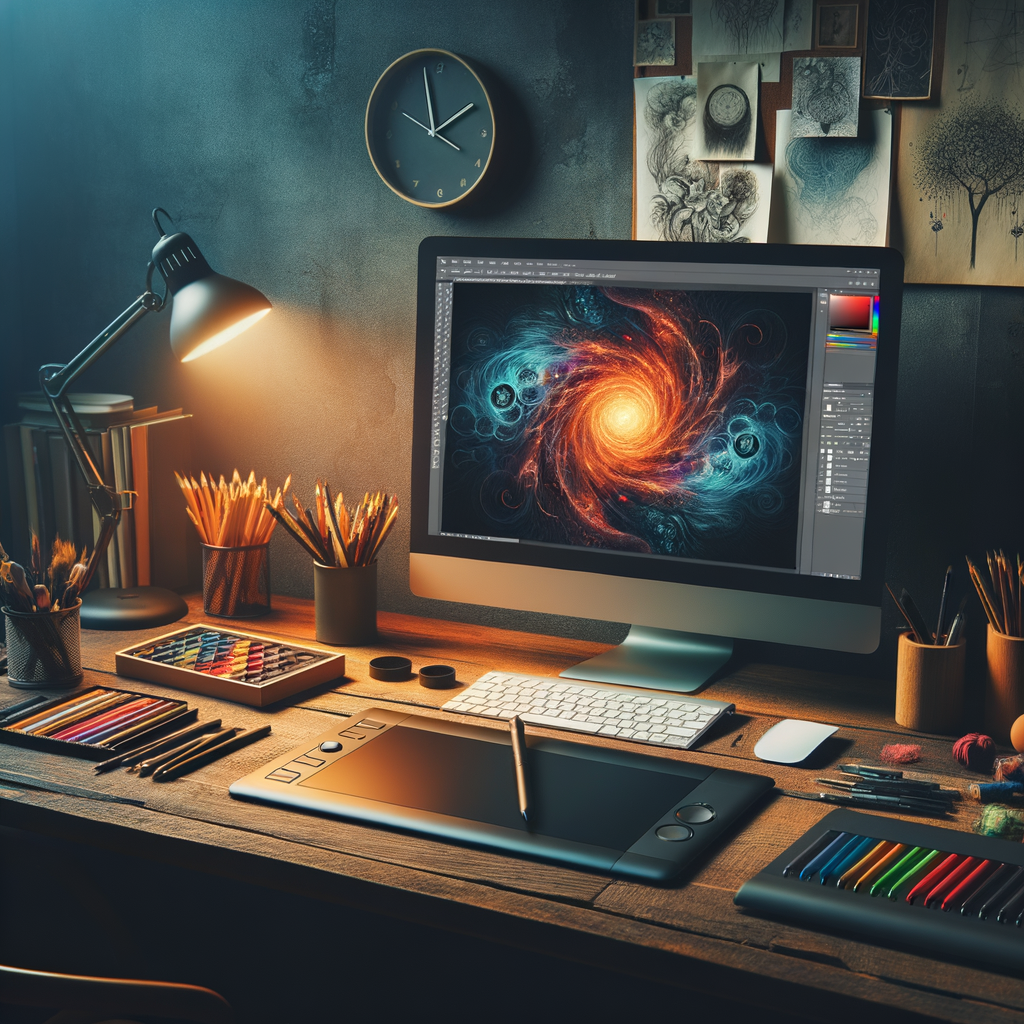
Light and shadow are fundamental elements in creating depth and realism in digital art. Mastering these concepts can elevate your artwork by adding dimensionality and intrigue. In this article, we will explore various techniques, tips, and tools that can help you become proficient in manipulating light and shadow in your digital creations. Whether you are a beginner seeking to understand the basics or a seasoned artist aiming to refine your skills, the insights provided here will guide you on your artistic journey.
Understanding how light behaves is crucial for any artist, especially in the realm of digital art. Light is what gives our environment its dimension and forms. By mastering light and shadow, you can bring your characters and scenes to life, making them more relatable and believable.
1. The Basics of Light and Shadow
Before diving into specific techniques, it’s essential to grasp the foundational concepts of light and shadow. Light travels in straight lines and alters its path upon hitting surfaces. Understanding how different light sources interact with shapes will allow you to predict where shadows should fall and how they will look.
There are three types of light that every artist should understand:
- Ambient Light: This is the general illumination in the environment, which provides a base level of light without casting distinct shadows. It can be seen in any setting and affects all objects uniformly.
- Key Light: The primary source of illumination within your scene. This light creates highlights and distinct shadows and significantly influences the mood.
- Fill Light: This refers to secondary lighting used to lighten shadows created by the key light. Fill light helps to reduce contrast by illuminating the darker areas.
Understanding these types of light will assist you in achieving more dynamic results in your artwork.
2. Techniques for Applying Light and Shadow in Digital Art
Once you have a grasp on how light interacts with objects, it’s time to start experimenting with your tools. Here are several techniques that can help you effectively implement light and shadow in your digital paintings:
2.1 Use Layering
One powerful feature of digital art is the ability to use layers. Utilize multiple layers to separate your base colors, shadows, and highlights. This method allows you to adjust each element without affecting the others, making it easier to refine your artwork.
2.2 Brush Techniques
Choosing the right brush can significantly impact how you apply shadows. Soft brushes are fantastic for creating smooth transitions between light and dark areas, while harder brushes can add sharp shadows and highlights. Don't hesitate to experiment and find what works best for your style.
2.3 Blending Modes
Many digital art programs offer blending modes that allow you to merge colors in unique ways. Experiment with modes like Overlay, Multiply, and Screen to achieve various lighting effects and enhance the overall depth of your artwork.
3. Color Theory in Relation to Light and Shadow
Color theory plays a significant role in how light and shadow are perceived in art. Shadows do not simply become darker versions of the base color; they are deeply influenced by the color of the light source and surrounding environment. Here are a few pointers:
- Shadows often have color temperature; for instance, a shadow in warm light can take on a cool tone.
- Consider using complementary colors in shadows to create contrast and vibrancy.
- Experiment with saturation; shadows may appear less saturated than highlights due to the absence of direct light.
4. Practical Exercises
Theoretical knowledge is essential, but practice is where skills are truly honed. Here are a few exercises to reinforce what you’ve learned:
- Value Studies: Create grayscale paintings focusing solely on light and shadow. This exercise helps you to understand the importance of values before introducing color.
- Master Studies: Analyze the work of artists known for their exceptional handling of light. Try to replicate their techniques in your style to gain insight into their methods.
- Daily Sketches: Set aside time every day for quick sketches focusing on light and shadow. This builds muscle memory and helps you see light as a dynamic element.
5. Tools of the Trade
Various tools and software can aid in the process of mastering light and shadow:
- Photoshop: Renowned for its versatile brushes and layering options, making it a primary choice for many digital artists.
- Krita: An open-source program with expansive brush settings and a focus on painting; tailors well to artists looking for a free alternative.
- Procreate: A popular choice among iPad users, known for its intuitive interface and excellent brush performance.
- Clip Studio Paint: Offers specialized tools for digital comic artists, including light and shadow features that cater specifically to manga-style illustrations.
6. Conclusion
Mastering light and shadow in digital art is an ongoing journey that greatly enhances your artistic capabilities. As you practice and experiment with different techniques, you’ll develop a keen sense of how to manipulate light to your advantage, resulting in more captivating and lifelike artwork. Continually seek feedback from your peers, and don’t be afraid of making mistakes—every artist's journey is filled with learning opportunities.
By incorporating the knowledge you’ve gained from this article, you’ll find yourself progressing towards becoming an adept digital artist. Embrace the challenges of creating and continue pushing your boundaries to find your unique artistic voice.

